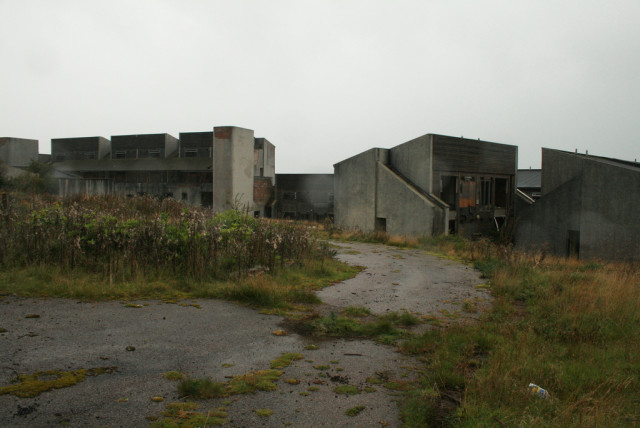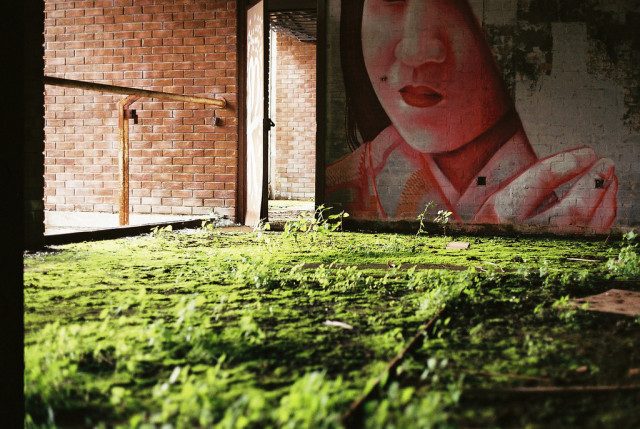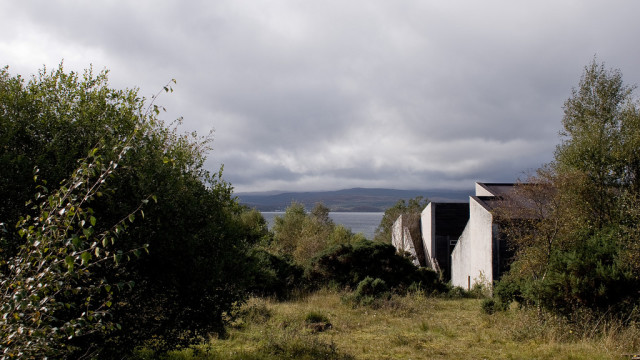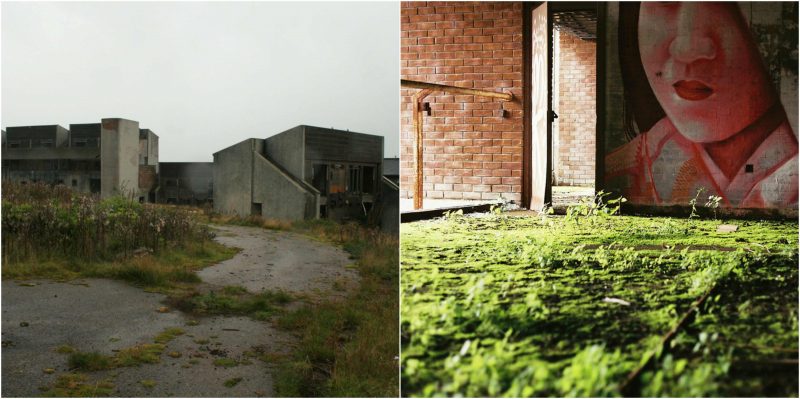In Pollphail, Scotland, an abandoned ghost village sits empty and will never be inhabited. There are weeds climbing on buildings that have been heavily graffitied. The small village was built during the oil boom of the 1970’s for the offshore workers; it was originally intended to accommodate the employees of the nearby construction yard.

Sadly, due to the rapid collapse in the local industry, the area was never occupied. The site was eventually left to crumble and decay on its own. Locals in Pollphail claim that the abandoned village is an eyesore. Just recently, a photographer traveled to the abandoned village to capture some of the loneliest areas of the place.
The construction yard is now a luxurious marina complex and was just a short distance to the north of the workers’ village of Pollphail, Argyll, and Bute. The yard was supposed to be built up of concrete platforms, but the industry had moved on quickly due to the growing demand for steel platforms instead.

Pollphail village was supposed to accommodate 500 workers, but as a result of the collapse of the local industry, no one had ever gotten a chance to live there. There is talk, however, that the village might be turned into a distillery.
Portavadie Distillery Ltd wanted to demolish all of the houses in the village. The houses have already begun to fall and collapse quite badly, and the company wants to develop the area with a distillery, warehouse, and a visitor center. They even have high hopes of eventually setting up a new village called Port Sandy, which is planned to hold 100 homes and a leisure complex.

However, before any planning is done or can be considered, a master plan for the area must be drawn up and pass inspection. The plan will first have to be discussed by a committee before any building can be done. After considering the master plan, the councilors will deal with the application submitted by the Portavadie Distillery for a bonded warehouse at the site.
In response to the report that was put before the councilors, council officer David Love said that the current Pollphail village will eventually be demolished as a consequence of the approval. The village will be cleared for the bonded warehouse and eventually the implementation of the masterplan.
Pollphail village has been an eyesore for long enough. In fact, there have been several attempts to redevelop the site after it was abandoned. Obviously, nothing worked out and the village has remained the same.
Love also added that the applicant who had submitted the proposed plan has a great track record of successful development within that area. They are quite keen to develop the site and have realized the area’s great potential. The proposal submitted will for sure secure the demolition of the site and clearance of the former village. This in itself will result in an environmental and landscape benefit to the area.

Here is a little history of the village:
In July 2009, the Agents of Change, an artistic collective came to the village. These people knew that the village was going to be demolished later that year so they decided to create a beautiful graffiti art gallery. The artists created wonderful figures, faces, abstract designs, and haunting images. (View the photos to see the graffiti, they’re truly breathtaking).
As stated above, the village was built for the oil industry workers. It was to be one of many specific locations built along the coast of Scotland developed as a support for the construction of oil rig platforms.
Other villages built included Portavadie and Polphail on the west coast of the Cowal Peninsula on Loch Fyne. These villages provided a sheltered port, a geological feature to build a dry dock, and a construction yard for the building of deep water oil gravity platforms. The land was purchased for the whole development by the government for the construction yard and the adjacent village. These were built between the years of 1975 and 1977.
